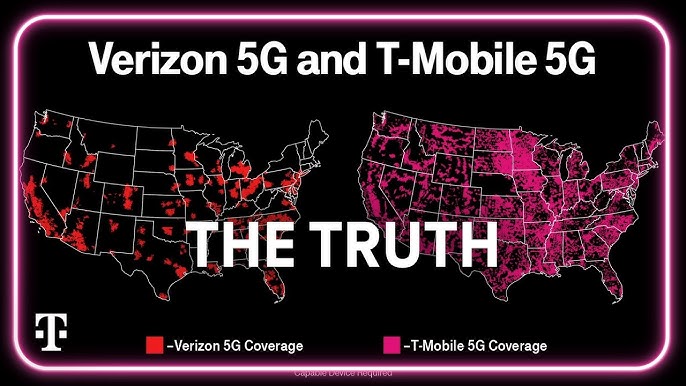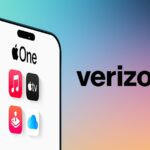Choosing a mobile carrier in the United States often involves comparing the major players, and a critical factor in that decision is network coverage. For many consumers, the choice boils down to Verizon vs T-Mobile coverage. Both carriers offer extensive networks, but they have different strengths, particularly when comparing their 4G LTE and rapidly expanding 5G services. This guide provides a comparison to help you understand their coverage differences in 2025.

Why Network Coverage is a Critical Choice
Your carrier’s network coverage directly impacts your daily mobile experience. It determines whether you can make calls reliably, send texts consistently, and access data for Browse, streaming, and using apps. Poor coverage in areas where you spend significant time – like home, work, or common travel routes – can lead to frustration and limit the usefulness of your device. Understanding the nuances of verizon vs t mobile coverage is key to selecting the right provider for your needs.
Read more about: Verizon One
4G LTE Foundation: Where Each Carrier Stands
While 5G gets much of the attention, 4G LTE remains the backbone of mobile connectivity across large parts of the US, especially in rural areas.
- Verizon: Historically, Verizon built its reputation on having the most extensive and reliable 4G LTE network in the country. It generally offers the widest geographic reach, providing a signal in many rural and remote locations where other carriers might struggle. This remains a significant strength.
- T-Mobile: T-Mobile also operates a vast 4G LTE network that covers the vast majority of Americans. While its geographic footprint for 4G LTE might be slightly smaller than Verizon’s in some remote regions, it provides strong service in most populated areas.
5G Networks: Comparing Verizon vs T-Mobile Coverage
The 5G landscape is where the differences between the two carriers become more pronounced.
- T-Mobile’s 5G Advantage: T-Mobile holds a substantial lead in overall 5G availability, covering significantly more geographic territory and a larger percentage of the US population with its 5G signal. This advantage stems largely from its extensive deployment of mid-band 5G spectrum (often branded as “Ultra Capacity 5G”). Mid-band offers a good balance, providing much faster speeds than 4G LTE while still covering considerable distances. Recent reports consistently show T-Mobile users connecting to 5G far more often than users on other networks.
- Verizon’s 5G Strategy: Verizon employs a multi-layered 5G approach:
- 5G Nationwide: This uses lower spectrum bands, similar to 4G LTE. It provides broad geographic coverage but offers more modest speed improvements over 4G.
- 5G Ultra Wideband: This utilizes high-band millimeter wave (mmWave) and mid-band (C-band) spectrum. It delivers significantly faster download and upload speeds (often leading in 5G upload speed tests) but in a more concentrated coverage area, primarily focused on cities, suburbs, and high-traffic venues. Verizon is rapidly expanding its mid-band C-band coverage to improve the reach of its faster 5G service.
The Takeaway: If getting a 5G signal in the most places possible is your priority, T-Mobile currently has the edge. If you are within Verizon’s 5G Ultra Wideband footprint, you may experience very high peak speeds.
Network Reliability and Consistency
Reliability – the ability to consistently connect and use your phone for basic tasks – is crucial. Independent testing firms like Opensignal and RootMetrics regularly evaluate carrier performance.
- Recent Findings: Recent reports show both Verizon and T-Mobile performing at a high level. In Opensignal’s early 2025 reports, Verizon and T-Mobile shared the top spot for the new “Reliability Experience” metric. T-Mobile often wins for “Consistent Quality,” measuring how often the network is sufficient for common app requirements. Verizon historically holds a strong reputation for overall network reliability, often factoring in its robust 4G performance. The gap is competitive and depends on the specific metric being measured.
The Urban vs. Rural Divide
Where you use your phone most often can influence the best choice:
- Urban/Suburban Areas: T-Mobile’s extensive mid-band 5G network generally provides superior 5G coverage and faster average 5G speeds in these areas. Verizon’s 5G Ultra Wideband also performs very well where deployed in cities.
- Rural Areas: Verizon’s broad 4G LTE network often provides more consistent basic connectivity in deep rural or remote locations. While T-Mobile has significantly improved its rural 5G availability (sometimes leading in specific rural 5G tests thanks to its lower-band 5G), Verizon’s overall reach may still be more dependable in the most sparsely populated regions.
Don’t Guess: Check Verizon vs T-Mobile Coverage Yourself!
National awards and general trends are helpful, but nothing replaces checking coverage in the specific areas important to you.
- Crucial Step: Before switching carriers or signing up, always use the official online coverage maps provided by both carriers.
- Tools:
- Verizon Coverage Map: Visit Verizon.com and look for their coverage map tool.
- T-Mobile Coverage Map: Visit T-Mobile.com and find their coverage map.
- Action: Enter your full home address, work address, and any other locations you frequent or travel to. Examine the maps closely to see the predicted level of service (4G LTE, 5G Nationwide, 5G Ultra Wideband / 5G Ultra Capacity) offered by each carrier in those exact spots.
Conclusion: Making an Informed Decision Based on Location
The debate over verizon vs t mobile coverage doesn’t have a single universal winner. Verizon often excels in overall 4G LTE reach and reliability, particularly rurally. T-Mobile currently leads significantly in 5G availability and average 5G speeds due to its strong mid-band network. The best choice for you depends heavily on where you need service most. Use the official coverage maps, consider independent network reports, and weigh your priorities regarding 4G vs. 5G performance to make an informed decision.


